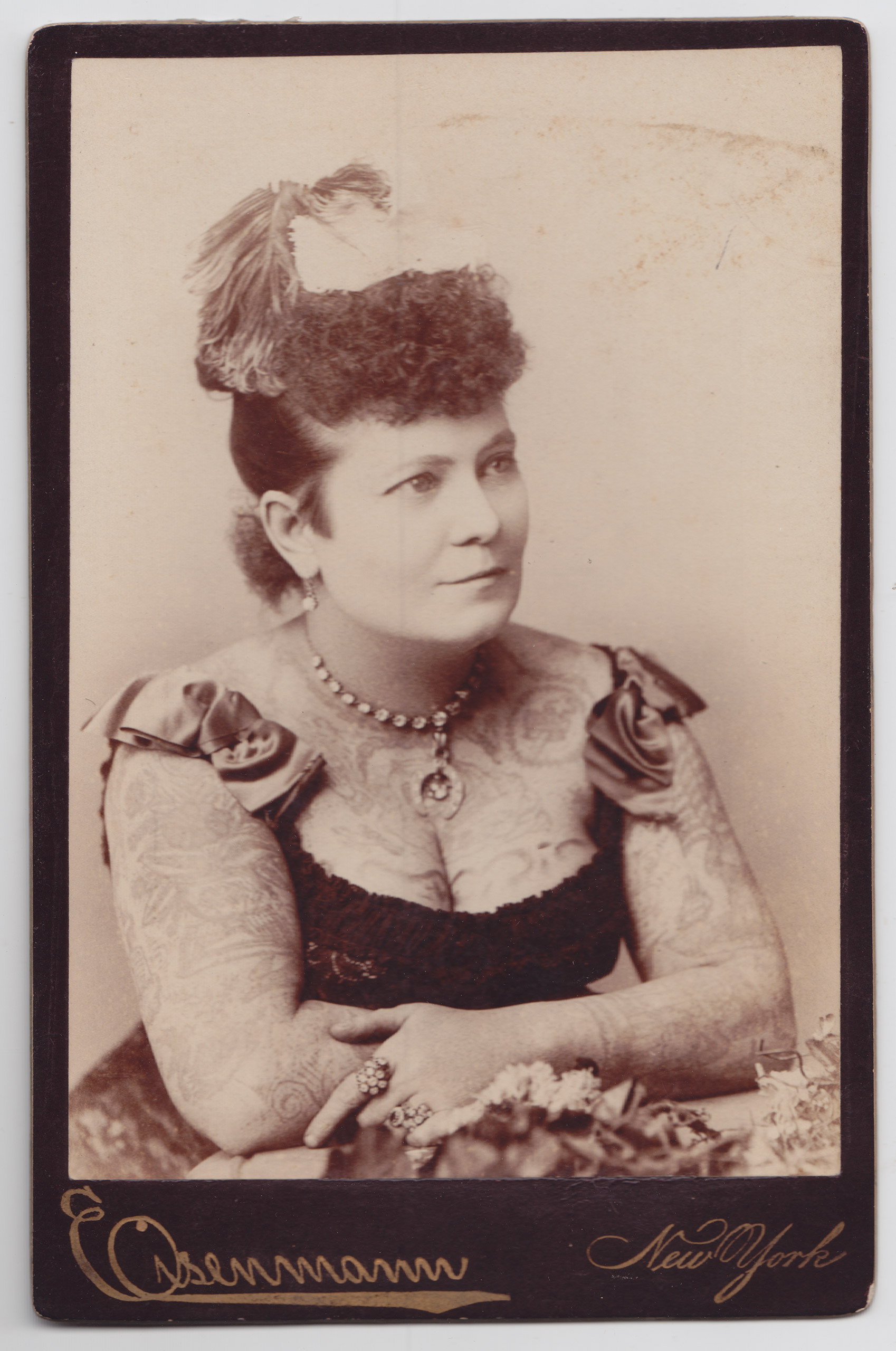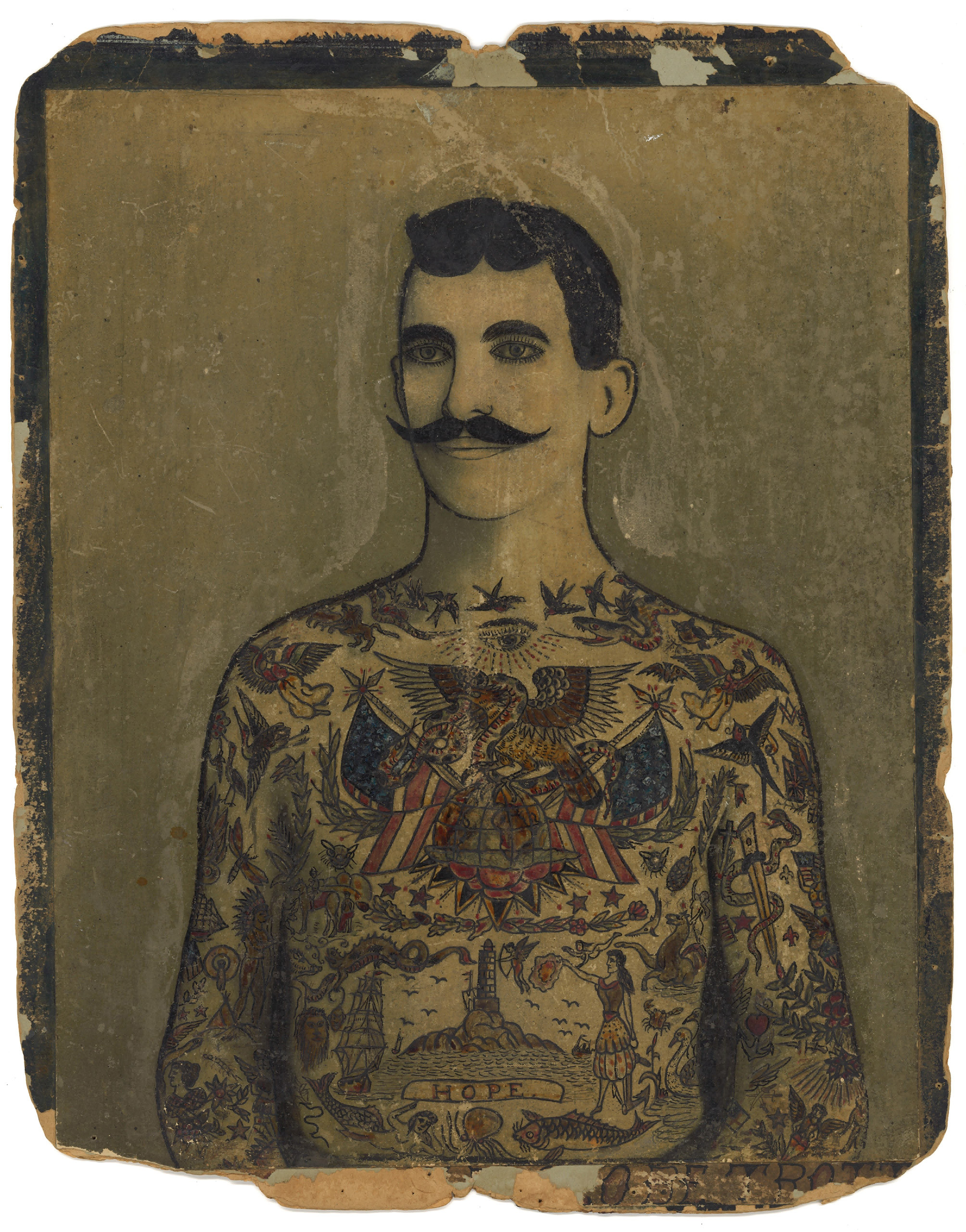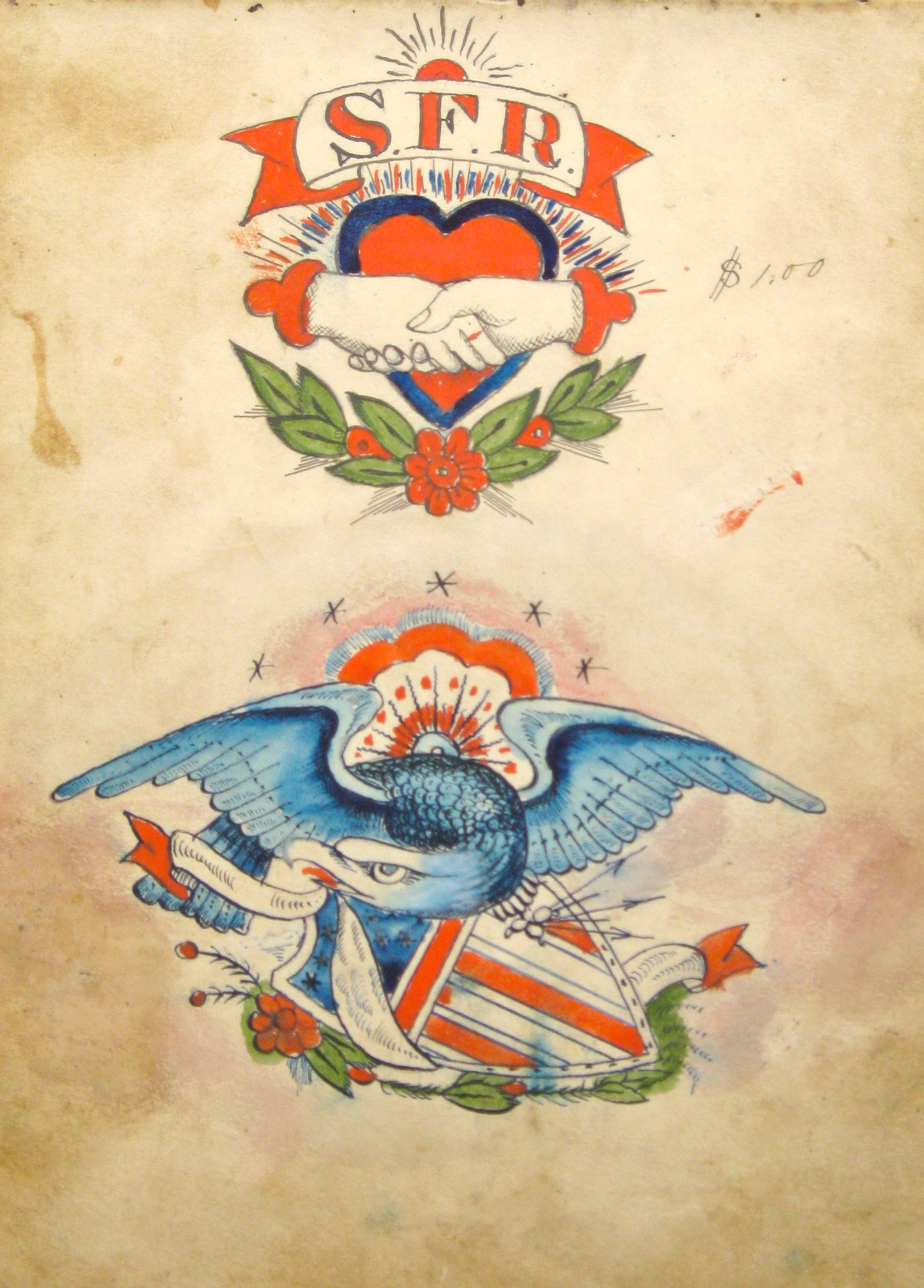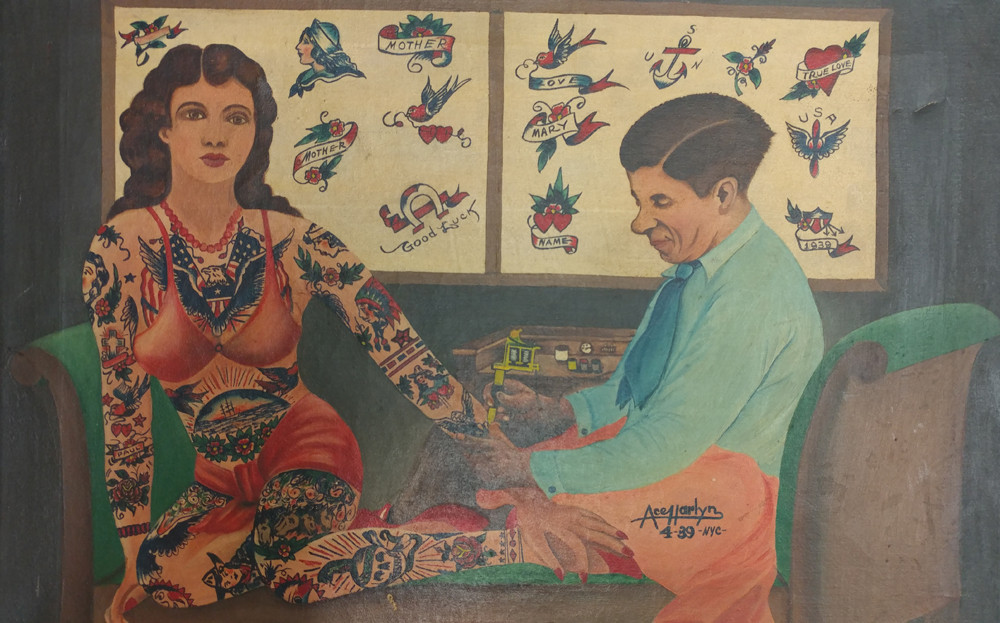Do you wonder if people had tattoos in the 1800s? Absolutely, the 1800s were a fascinating period for the evolution of tattooing, with roots stretching from ancient indigenous practices to becoming a mark of royalty and a symbol of personal identity. At tattooat.com, we delve into this rich history, offering insights into tattoo artistry and its cultural significance. Uncover the intricate stories and surprising trends of 19th-century body art, finding inspiration and knowledge for your own tattoo journey and exploring diverse tattoo designs and connecting with talented tattoo artists.
1. What Was The Tattoo Culture Like In The 1800s?
The tattoo culture in the 1800s was incredibly diverse, evolving from practical identification to high-society fashion and expressions of personal stories. Initially, tattoos served functional purposes like identification for sailors or medicinal practices among Native American tribes, then transitioning into symbols of status and belonging among European royalty and, later, as a form of self-expression and economic opportunity for working-class individuals. The spread of tattoos was heavily influenced by maritime travel and cultural exchanges, with sailors playing a crucial role in popularizing tattoo art across different continents.
1.1 How Did Maritime Travel Influence Tattooing?
Maritime travel significantly influenced the tattooing landscape by acting as a conduit for cultural exchange. Sailors picked up tattooing techniques and designs from Polynesian cultures during their voyages, leading to their adaptation and spread in Western societies. According to the South Street Seaport Museum, sailors often got inked to commemorate significant events like crossing the equator or rounding Cape Horn, with specific designs like anchors symbolizing stability and protection at sea.
1.2 What Role Did Royalty Play In Popularizing Tattoos?
Royalty played a pivotal role in popularizing tattoos as a fashion statement during the Victorian era. The trend took off after Britain’s Prince of Wales (later King Edward VII) got a tattoo during a trip to Jerusalem in 1862. His sons, Prince Albert and Prince George (future King George V), further fueled the trend by getting dragon tattoos in Japan. This royal endorsement led to tattoos becoming a fashionable flirtation with the exotic among European and American high society.
1.3 How Did Tattoos Offer Opportunities For Women In The 1800s?
Tattoos presented unique opportunities for women in the 1800s, especially in circuses and sideshows. Women with extensive body art could earn a living by showcasing their tattoos, providing a rare avenue for economic independence at a time when job opportunities were limited. As Cristian Petru Panaite, curator at the New-York Historical Society, notes, these women were business-savvy and capitalized on the fascination with tattoos to control their bodies and make a profit. Mildred Hull is considered the first woman to open a tattoo shop on the Bowery.
 Nora Hildebrandt, ca. 1880. Photograph by Charles Eisenmann.
Nora Hildebrandt, ca. 1880. Photograph by Charles Eisenmann.
2. What Were Common Tattoo Designs During The 1800s?
Common tattoo designs during the 1800s reflected the cultural influences and practical needs of the time, ranging from nautical symbols among sailors to fashionable motifs among socialites. Sailors frequently sported anchors, ships, and other maritime symbols for luck and identification, while socialites favored butterflies, flowers, and dragons as exotic fashion statements. Additionally, indigenous people often had tattoos representing battle victories or protective spirits, showcasing a deep connection to their culture and beliefs.
2.1 What Nautical Symbols Were Popular Among Sailors?
Among sailors, nautical symbols like anchors, ships, and compasses were incredibly popular. Anchors symbolized stability and served as a safeguard against drowning, reflecting sailors’ superstitions and reliance on the sea. According to Capt. Jonathan Boulware, executive director of the South Street Seaport Museum, these tattoos were more than just decoration; they were talismans believed to offer protection and good fortune during their voyages.
2.2 What Motifs Were Favored By Socialites?
Socialites in the Victorian era favored delicate and exotic motifs such as butterflies, flowers, and dragons. These designs were seen as fashionable expressions of their interest in the exotic and were often small and easily concealed. Lady Randolph Churchill, Winston Churchill’s mother, famously had a snake tattoo on her wrist that could be hidden by bracelets, highlighting the discreet yet fashionable nature of these tattoos.
2.3 How Did Indigenous Cultures Influence Tattoo Designs?
Indigenous cultures significantly influenced tattoo designs with symbols representing battle victories, protective spirits, and tribal affiliations. The King of the Maquas (Mohawk tribe) was depicted with black lines covering his chest and face, while a Seneca trader used tattoos of a snake and a bird as his signature. According to Cristian Petru Panaite, these tattoos were deeply meaningful, reflecting personal achievements, spiritual beliefs, and cultural identity.
3. Where Did Tattooing Take Place In The 1800s?
Tattooing in the 1800s took place in various settings, reflecting the diverse social contexts in which tattoos were acquired. Initially, sailors got tattoos onboard ships during long voyages, while indigenous people received them within their tribal communities as part of traditional rituals. As tattoos gained popularity, professional tattoo shops began to emerge, particularly in port cities and urban centers. Socialites often had tattoo artists visit their homes for private sessions, highlighting the discreet and personalized nature of their body art.
3.1 How Did Tattooing Occur Onboard Ships?
Tattooing onboard ships was a common practice, with sailors often inking each other using rudimentary tools and homemade inks. These tattoos served as personal mementos of their travels, commemorating significant events or expressing their affiliations. The close quarters and long periods at sea fostered a culture of camaraderie and self-expression through body art.
3.2 Where Were The First Tattoo Shops Located?
The first tattoo shops were located in port cities and urban centers, catering to sailors, soldiers, and other working-class individuals. New York City is considered the birthplace of modern tattoos, with Martin Hildebrandt opening the first professional tattoo shop in the mid-19th century. These shops provided a more formal and accessible setting for getting tattoos, contributing to the art form’s growing popularity.
3.3 How Did Socialites Obtain Tattoos?
Socialites typically obtained tattoos through private sessions with tattoo artists who made house calls. This discreet approach allowed them to indulge in the fashionable trend without attracting unwanted attention. Ads of the time characterized body art as costing as much as a fine dress but not as much as fine jewelry, highlighting the exclusive and personalized nature of these services.
4. Who Were The Notable Tattoo Artists Of The 1800s?
The 1800s saw the rise of several notable tattoo artists who significantly contributed to the development and popularization of the art form. Martin Hildebrandt, who opened the first professional tattoo shop in New York City, is considered a pioneer of modern tattooing. Augustus “Gus” Wagner, a sailor and sideshow performer, gained fame as one of the most tattooed men in America and helped spread tattoo culture through his travels. Samuel O’Reilly, who invented the first electric rotary tattoo machine, revolutionized the tattooing process, making it faster and more efficient.
4.1 Who Was Martin Hildebrandt?
Martin Hildebrandt was a German-American tattoo artist who opened the first professional tattoo shop in New York City in the mid-19th century. He is considered a pioneer of modern tattooing, catering to Civil War soldiers and other clientele seeking permanent body art. Hildebrandt’s shop laid the foundation for the development of a formal tattoo industry in the United States.
4.2 Who Was Augustus “Gus” Wagner?
Augustus “Gus” Wagner was a sailor, sideshow performer, and tattoo artist who gained fame as one of the most tattooed men in America. With over 800 tattoos covering his body, Wagner traveled extensively, showcasing his body art and promoting tattoo culture. The South Street Seaport Museum exhibition, The Original Gus Wagner: The Maritime Roots of Modern Tattoo, highlights his significant contribution to popularizing tattoos.
 Augustus “Gus” Wagner, Self-Portrait, Tattoo Flash, ca. 1910-1930.
Augustus “Gus” Wagner, Self-Portrait, Tattoo Flash, ca. 1910-1930.
4.3 Who Was Samuel O’Reilly?
Samuel O’Reilly was an Irish-American tattoo artist and inventor who revolutionized the tattooing process with his invention of the first electric rotary tattoo machine in 1891. Inspired by Thomas Edison’s electric pen, O’Reilly’s machine made tattooing faster, more efficient, and less painful. This innovation significantly contributed to the widespread adoption of tattoos and the growth of the tattoo industry.
5. How Did Tattooing Reflect Social Status In The 1800s?
Tattooing in the 1800s reflected social status in complex ways, initially serving as a mark of belonging and identification among sailors and indigenous people. As it gained popularity, tattoos became a fashionable trend among socialites and royalty, signifying their wealth and adventurous spirit. However, tattoos also held a different connotation for working-class individuals, particularly women in circuses and sideshows, who used their body art as a means of economic empowerment.
5.1 How Did Tattoos Indicate Belonging Among Sailors?
Among sailors, tattoos indicated belonging to a particular ship, trade, or maritime culture. Specific designs like anchors, nautical stars, and crossed cannons signified their experience, rank, and affiliations. These tattoos were often acquired during significant voyages and served as a permanent record of their maritime adventures.
5.2 What Did Tattoos Symbolize For Socialites And Royalty?
For socialites and royalty, tattoos symbolized wealth, worldliness, and a flirtation with the exotic. The trend was popularized by European royalty, who acquired tattoos during their travels to distant lands. These tattoos were often delicate and discreet, reflecting their refined tastes and privileged status.
5.3 How Did Tattoos Empower Working-Class Women?
Tattoos empowered working-class women by providing them with a means of economic independence and self-expression. Women in circuses and sideshows could earn a living by showcasing their tattooed bodies, challenging societal norms and reclaiming control over their identities. According to Cristian Petru Panaite, these women were business-savvy and used their tattoos to capitalize on public fascination and achieve financial freedom.
6. What Were The Risks And Perceptions Associated With Tattoos In The 1800s?
In the 1800s, tattoos were associated with both risks and varying perceptions depending on social context. Before the advent of modern sterilization techniques, tattooing carried significant health risks, including infections and the spread of diseases. Socially, tattoos were often stigmatized, particularly among the upper classes, who viewed them as vulgar or associated with sailors and criminals. However, this perception began to shift as tattoos gained popularity among royalty and socialites, leading to a more nuanced understanding of body art.
6.1 What Health Risks Were Associated With Tattooing?
The health risks associated with tattooing in the 1800s primarily involved infections due to unhygienic practices. Without proper sterilization, tools and needles could transmit bacteria and diseases, leading to skin infections, blood poisoning, and other complications. These risks were particularly prevalent in informal tattooing settings, such as onboard ships or in unregulated tattoo shops.
6.2 How Were Tattoos Perceived By Different Social Classes?
Tattoos were perceived differently by various social classes in the 1800s. Among the working class, particularly sailors and soldiers, tattoos were often seen as marks of camaraderie, identity, and personal history. In contrast, the upper classes initially viewed tattoos with suspicion, associating them with sailors, criminals, and other marginalized groups. However, as tattoos gained popularity among royalty and socialites, this perception began to evolve, leading to a more fashionable and accepted view of body art.
6.3 How Did Perceptions Of Tattoos Change Over Time?
Perceptions of tattoos changed significantly over time in the 1800s, evolving from a stigmatized practice to a fashionable trend. The initial association of tattoos with sailors and criminals gradually gave way to a more nuanced understanding as tattoos gained acceptance among royalty and socialites. This shift was further influenced by the rise of circuses and sideshows, where tattooed women challenged societal norms and demonstrated the potential for tattoos as a form of self-expression and economic empowerment.
7. What Events Influenced Tattooing In The 1800s?
Several key events influenced tattooing in the 1800s, shaping its evolution and popularity. Maritime voyages played a crucial role in spreading tattoo culture by facilitating the exchange of techniques and designs between different cultures. The American Civil War led to the use of tattoos for identification purposes, particularly among soldiers. The invention of the electric rotary tattoo machine in 1891 revolutionized the tattooing process, making it faster, more efficient, and more accessible.
7.1 How Did Maritime Voyages Shape Tattoo Culture?
Maritime voyages significantly shaped tattoo culture by serving as a conduit for cultural exchange. Sailors encountered indigenous tattooing practices in places like Polynesia and brought these techniques and designs back to Western societies. This cross-cultural exchange led to the adaptation and spread of various tattoo styles, contributing to the diversification of tattoo art.
7.2 What Role Did The American Civil War Play?
The American Civil War played a role in the history of tattooing. As Martin Hildebrandt set up shop in the mid-19th century to tattoo Civil War soldiers for identification purposes.
7.3 How Did The Invention Of The Electric Tattoo Machine Impact Tattooing?
The invention of the electric rotary tattoo machine by Samuel O’Reilly in 1891 had a transformative impact on tattooing. Inspired by Thomas Edison’s electric pen, O’Reilly’s machine made tattooing faster, more precise, and less painful. This innovation significantly increased the efficiency and accessibility of tattooing, contributing to its widespread adoption and the growth of the tattoo industry.
 Eagle and shield, ca. 1875–1905 by Samuel O’Reilly.
Eagle and shield, ca. 1875–1905 by Samuel O’Reilly.
8. How Did Tattooing Differ Between Men And Women In The 1800s?
Tattooing in the 1800s differed significantly between men and women, reflecting societal norms and gender roles of the time. Men, particularly sailors and soldiers, often sported tattoos as marks of identity, camaraderie, and personal history. Women, especially socialites, acquired tattoos as fashionable expressions of their wealth and adventurous spirit. However, working-class women in circuses and sideshows used tattoos as a means of economic empowerment, challenging traditional gender roles and reclaiming control over their bodies.
8.1 What Types Of Tattoos Were Common Among Men?
Among men, common tattoos included nautical symbols like anchors, ships, and compasses, as well as military insignia and patriotic designs. These tattoos often symbolized their profession, affiliations, and personal experiences. Sailors, in particular, used tattoos to commemorate significant voyages and express their connection to the sea.
8.2 What Types Of Tattoos Were Common Among Socialite Women?
Socialite women favored delicate and exotic motifs such as butterflies, flowers, and dragons. These designs were often small and discreet, reflecting their refined tastes and privileged status. Lady Randolph Churchill’s snake tattoo, hidden by bracelets, exemplifies the fashionable yet discreet nature of tattoos among socialite women.
8.3 How Did Working-Class Women Use Tattoos Differently?
Working-class women in circuses and sideshows used tattoos as a means of economic empowerment and self-expression. By showcasing their extensively tattooed bodies, these women challenged societal norms and reclaimed control over their identities. Their tattoos were often large and elaborate, reflecting their bold and unconventional lifestyles.
9. Were There Any Laws Or Regulations Regarding Tattoos In The 1800s?
In the 1800s, laws and regulations regarding tattoos were virtually nonexistent, reflecting the relatively unregulated nature of the practice. Tattooing was primarily a grassroots phenomenon, with sailors, soldiers, and other individuals acquiring tattoos in informal settings. As professional tattoo shops began to emerge, they operated without formal oversight, and it wasn’t until the 20th century that governments started to regulate the tattoo industry in response to health concerns.
9.1 How Regulated Was Tattooing In The Early 1800s?
Tattooing in the early 1800s was largely unregulated, with no formal laws or government oversight. The practice was primarily confined to sailors, soldiers, and indigenous communities, where it was governed by cultural norms and traditions rather than legal regulations.
9.2 When Did Regulations Begin To Emerge?
Regulations regarding tattooing began to emerge in the 20th century, driven by growing concerns about public health and safety. Outbreaks of diseases linked to unsanitary tattooing practices prompted governments to introduce licensing requirements, hygiene standards, and other regulations to protect consumers.
10. What Resources Can Help Me Learn More About Tattoo History?
Several resources can help you learn more about tattoo history, including museum exhibitions, books, and online archives. The New-York Historical Society’s exhibition, Tattooed New York, provides a comprehensive overview of 300 years of tattooing in New York City. The South Street Seaport Museum’s exhibition, The Original Gus Wagner: The Maritime Roots of Modern Tattoo, explores the maritime origins of tattooing through the life of Gus Wagner. Additionally, various books and online resources delve into the history and cultural significance of tattoos across different regions and time periods. You can also visit tattooat.com for in-depth articles, artist spotlights, and design inspiration.
10.1 What Museum Exhibitions Focus On Tattoo History?
Several museum exhibitions focus on tattoo history, offering visitors a chance to explore the art form’s cultural significance and evolution. Tattooed New York at the New-York Historical Society documents 300 years of tattooing in New York City, while The Original Gus Wagner: The Maritime Roots of Modern Tattoo at the South Street Seaport Museum delves into the maritime origins of tattoos through the life of Gus Wagner.
10.2 What Books Are Recommended For Learning About Tattoo History?
Many books offer valuable insights into tattoo history, covering various regions, styles, and cultural contexts. These books provide in-depth analyses of tattoo art, its historical evolution, and its social and cultural significance.
10.3 What Online Resources Are Available?
Numerous online resources are available for learning about tattoo history, including academic articles, museum websites, and online archives. These resources offer a wealth of information, images, and historical documents related to tattooing across different cultures and time periods. Don’t forget to explore tattooat.com for expertly curated content on tattoo history, designs, and artists.
 Charlie Wagner tattooing Millie Hull, 1939, by Ace Arlyn (active ca. 1930-1940).
Charlie Wagner tattooing Millie Hull, 1939, by Ace Arlyn (active ca. 1930-1940).
FAQ: Tattoos In The 1800s
1. Were tattoos common in the 1800s?
Yes, tattoos were increasingly common in the 1800s, particularly among sailors, soldiers, and working-class individuals, and even became a fashion statement among socialites and royalty.
2. What did tattoos symbolize in the 1800s?
Tattoos symbolized various things in the 1800s, including identity, belonging, personal history, wealth, worldliness, and economic empowerment.
3. Who were some famous tattoo artists in the 1800s?
Famous tattoo artists in the 1800s included Martin Hildebrandt, Augustus “Gus” Wagner, and Samuel O’Reilly, each contributing significantly to the art form’s development.
4. How were tattoos done in the 1800s?
Tattoos in the 1800s were primarily done using manual techniques, with artists using needles and homemade inks to create designs on the skin.
5. What were the popular tattoo designs in the 1800s?
Popular tattoo designs in the 1800s included nautical symbols, military insignia, patriotic designs, butterflies, flowers, and dragons.
6. Did women get tattoos in the 1800s?
Yes, women got tattoos in the 1800s, both as fashionable expressions of wealth and as a means of economic empowerment in circuses and sideshows.
7. Where were tattoos most popular in the 1800s?
Tattoos were most popular in port cities and urban centers, where sailors, soldiers, and other working-class individuals congregated.
8. Were there any risks associated with getting tattoos in the 1800s?
Yes, there were risks associated with getting tattoos in the 1800s, primarily related to infections due to unhygienic practices.
9. How did the invention of the electric tattoo machine impact tattooing in the 1800s?
The invention of the electric tattoo machine in 1891 revolutionized the tattooing process, making it faster, more efficient, and more accessible.
10. How can I learn more about tattoo history?
You can learn more about tattoo history by visiting museum exhibitions, reading books, exploring online resources, and visiting tattooat.com for expertly curated content.
Ready to dive deeper into the fascinating world of tattoos? Explore tattooat.com today for a wealth of design inspiration, artist spotlights, and in-depth articles on tattoo history and culture. Discover the perfect design to express your individuality, find a talented artist to bring your vision to life, and learn everything you need to know about tattoo care and aftercare. Visit tattooat.com now and start your tattoo journey.
